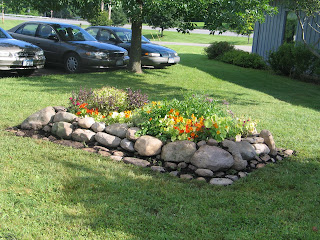 December was a record setting cloudy, snowy month here in the central western part of upstate New York; not idyllic for generating solar electric power! Yesterday after 16 overcaste days, the sun was out and the photovoltaic (P.V.) towers were generating electrical power!
December was a record setting cloudy, snowy month here in the central western part of upstate New York; not idyllic for generating solar electric power! Yesterday after 16 overcaste days, the sun was out and the photovoltaic (P.V.) towers were generating electrical power!Since the winter solstice was ten days ago and Sue & I had adjusted the angle of the solar panels to recieve the lower angle of winter sunlight more directly earlier in December; I wanted some empiral evidence that the 'angles' were worth the effort.
 Below is a photo I took showing the angle of insolation near "solar noon". I printed, then scanned the photo with the protractor to measure the angle of insolation - Results: 24 degree angle.
Below is a photo I took showing the angle of insolation near "solar noon". I printed, then scanned the photo with the protractor to measure the angle of insolation - Results: 24 degree angle.
(summer angle with higher solar noon sun angle) (winter angle with lower solar noon sun angle)

 The video clip is of the inverter display in our basement. The inverter converts the direct current (D.C) power from the P.V. system into alternating current (A.C), before going to the grid. As the display cycles through, you can see the amount of CO 2 kept out of the atmosphere; the number of Kilowatts of power currently being produced ('speed'); the total number of Kilowatts hours produced by our system('how far we've traveled'); the number of Kilowatt hours currently produced for this day ('how far we've traveled today'); and acknowedgement that the two towers ('system is working').
The video clip is of the inverter display in our basement. The inverter converts the direct current (D.C) power from the P.V. system into alternating current (A.C), before going to the grid. As the display cycles through, you can see the amount of CO 2 kept out of the atmosphere; the number of Kilowatts of power currently being produced ('speed'); the total number of Kilowatts hours produced by our system('how far we've traveled'); the number of Kilowatt hours currently produced for this day ('how far we've traveled today'); and acknowedgement that the two towers ('system is working').
* (italics = analogy of energy display)
Below is our meter which indicates that electrical power is being produced for our use and the extra is being metered back into the grid.












































